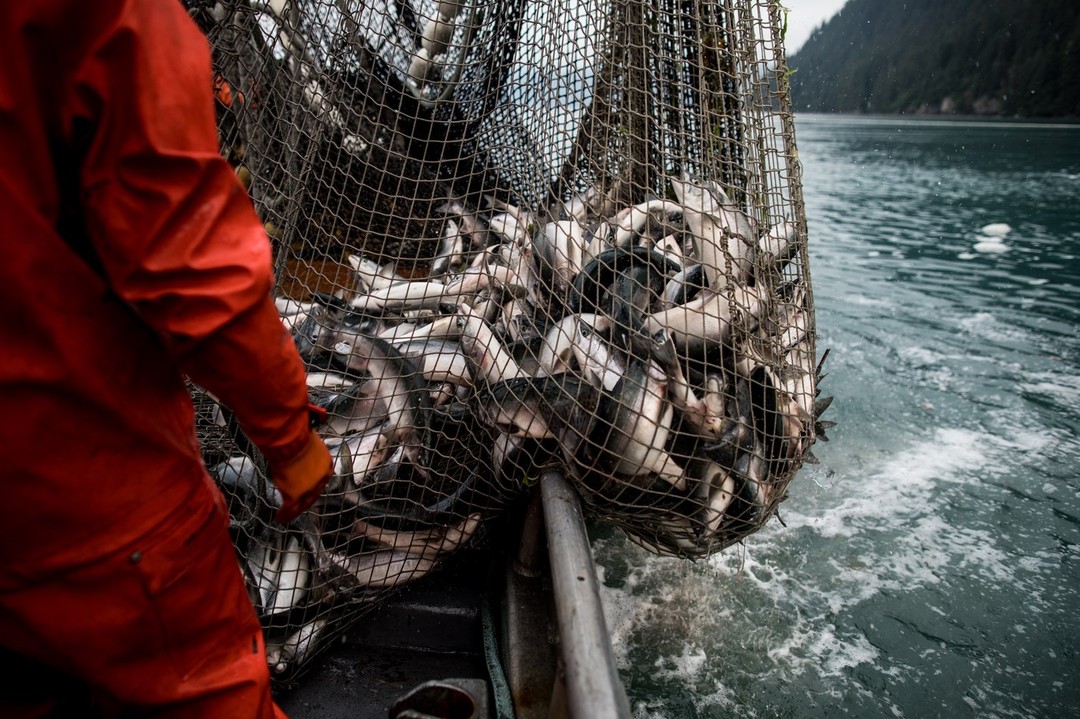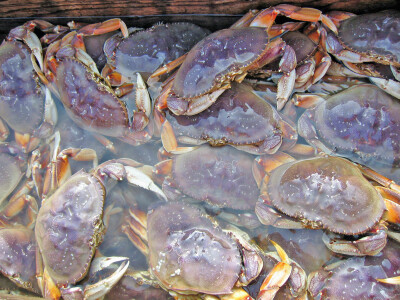The business of seafood didn’t stop with the pandemic, but it sure took a few unexpected turns. While covid-19 has created some hurdles, especially at foodservice, which typically represents two-thirds of domestic seafood consumption, it’s also created some opportunities for Alaska seafood.
According to IRI, 90 percent of Americans are eating at home more often, 73 percent are taking more time to prepare meals, and 53 percent are creating more meals from scratch. In May, frozen seafood retail sales were up 66 percent year over year, and in the U.S., online shopping saw a 95 percent increase.
This is an opportunity we have been working toward for years. Consumers are paying attention to proteins that provide healthy, immune-boosting benefits and come from a stable and sustainable supply chain, and Alaska seafood checks all of these boxes. As an industry, it’s our job to convert these first-timers to lifetime consumers of Alaska seafood by ensuring they have an enjoyable experience from the start.
With the global coronavirus pandemic affecting virtually every step of the Alaska seafood supply chain, the Alaska Seafood Marketing Institute utilized market research and industry relationships to respond to rapidly changing consumer behavior and global markets, and ensure Alaska seafood continued to meet the demand for healthy, delicious and sustainable wild seafood.
Cooking with confidence
When people around the world looked to their quarantine kitchens with new enthusiasm, bread wasn’t the only thing they were trying out at home for the first time.
ASMI leaned into the trend in the U.S. market with an integrated communications plan featuring at-a-glance cooking tips and recipe ideas to help consumers build confidence in cooking wild Alaska seafood at home. This campaign focused on consumers filling pantries and freezers this spring. We also amplified our revamped Cook It Frozen! techniques and materials through popular cooking and media platforms. For one of ASMI’s longest-running campaigns, it feels especially relevant in today’s world.
In May, ASMI’s Japan program increased its at-home cooking support with recipe development tied to a hosted Instagram promotion of Herring Roe Day on May 5. Originally planned as a series of in-store promotions for the holiday, which is meant to encourage consumers to eat herring roe (kazunoko) beyond the traditional New Year’s holiday, the program shifted to an online campaign featuring preparation tips and serving suggestions after the coronavirus forced the cancellation of all in store activities.
In the UK, ASMI tapped into the new normal, which found consumers needing new recipe ideas for breakfast, lunch and midday snacks as well as dinner, by partnering with chefs and dieticians on a series of seafood brunch, bowl and snack recipes, including an Alaska Seacuterie board.
E-commerce emerges strong
ASMI rapidly shifted global promotions to support increases in online shopping. ASMI’s China program was ahead of other markets in terms of experience with online and e-commerce models, and well positioned to support the even greater shift to online ordering. ASMI began a new online promotion targeting home cooks, particularly those 56 percent of Chinese parents who were now cooking at home with their children. Two quickly executed e-commerce promotions in China in March and April resulted in more than $2 million in Alaska seafood sales with a small investment from ASMI.
In Germany, ASMI partnered with a popular direct-to-consumer shopping app, to deliver targeted Alaska Seafood content to consumers as part of an overall BBQ grilling themed promotion within the app.
Media and importer education
In Southeast Asia and China, one of ASMI’s focus areas is diversifying opportunities for products that suffer from declining monopolistic markets in Japan through in-person seminars and culinary demonstrations. To keep momentum moving, these programs are shifting to virtual seminars and sending sample product deliveries to key chefs, importers and media.
Here in the U.S., we have directed efforts toward sending product samples to media and culinary partners who were staying home, cooking more and sharing their recipes on their social and digital media platforms. This led to a steady stream of press coverage with a 153 percent increase in year-over-year media impressions highlighting how people were enjoying Alaska seafood at home. We plan to build on these successes moving forward.
Supporting our partners
Another priority has been to support our foodservice and trade partners around the globe. In Spain, ASMI partnered with restaurants and chef associations to serve critically needed healthy meals of Alaska seafood dishes at hospitals and for families in need. As restaurants began reopening, ASMI’s Southern Europe program partnered with local distributors to offer a “reopening gift” to select restaurants, including a one-week supply of Alaska seafood to help stabilize the important foodservice sector during uncertain times.
A recent Datassential consumer study showed that seafood was the second most craved restaurant menu item that domestic consumers miss from restaurants. ASMI’s U.S. domestic program worked with renowned sustainable seafood chef advocate Barton Seaver to develop tips and techniques for restaurant chefs to prepare those craveable seafood favorites through seafood takeout menus. ASMI also joined the Seafood Nutrition Partnership’s “Eat Seafood, America” campaign to support the seafood supply chain by promoting domestic consumption of U.S. seafood.
Stakeholder resources
Developing resources for our stakeholders has always been a core service of ASMI. We’re increasing our support for all of our partners with expanded online resources and bolstering both B2B and B2C Alaska seafood sales through a new online supplier’s directory.
ASMI’s seafood technical program is generating new nutrition and quality resources to communicate the benefits and attributes of purchasing Alaska seafood, including a new seafood processing video which, in lieu of trade missions to Alaska, serves as an educational tool to highlight best practices in processing Alaska seafood.
The ASMI global food aid program continues to advocate for our industry, keeping Alaska seafood top of mind among federal and state agencies determining how to spend stimulus and economic relief funds. In response to the pandemic, additional Section 32 purchases have been announced for canned Alaska pink salmon and Alaska pollock products. Over $60 million of Alaska seafood is committed to be purchased by the USDA through the year with more expected to be announced. These federal programs provide much needed high-quality protein and nourishment in the form of Alaska seafood to foodbanks, nonprofits and similar programs nationwide.
In the first days of the pandemic, ASMI created an online resource page to share information between industry, trade, the state, fishermen, communities, and our customers around the globe who love Alaska seafood. It is critically important to reinforce the message that Alaska seafood is safe, and that the Alaska seafood industry’s number one priority is the health and safety of all.
These last six months have taught us to be more nimble than ever and the importance of our relationships with all sides of our global industry. We continue to learn from and build upon these lessons as the seafood business and consumer landscape changes to best position our world class, wild, sustainable Alaska seafood resource.

Jeremy Woodrow is the executive director for the Alaska Seafood Marketing Institute in Juneau.







